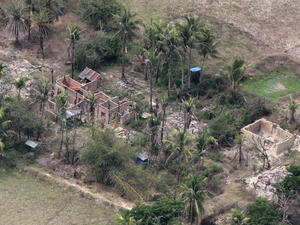UNHCR welcomes asylum law in Serbia and Montenegro
UNHCR welcomes asylum law in Serbia and Montenegro

The new national asylum law, when adopted and implemented at the republic level, will ultimately offer better protection for those seeking asylum in Serbia and Montenegro in the future.
BELGRADE, Serbia and Montenegro, March 24 (UNHCR) - Serbia and Montenegro today adopted an asylum law that UNHCR has called "a concrete step" towards establishing a national asylum system in a country recovering from years of conflict and displacement.
The Law on Asylum of the State Union of Serbia and Montenegro was adopted at the ongoing 36th Session of the Parliament of the State Union. This framework law is based on the 1951 Convention related to the Status of Refugees and is the result of years of negotiations and drafting between the government and the UN refugee agency.
"This is a very important, strategic achievement for UNHCR," said Rob Robinson, Deputy Director of the agency's Europe bureau. "We are truly very happy with this important development that will strengthen the protection of asylum seekers and refugees."
The newly-adopted law sets out the basic principles of refugee protection, rights and obligations of refugees and asylum seekers, as well as the minimum procedural safeguards under the 1951 Convention, which Serbia and Montenegro signed in 2001.
"Serbia and Montenegro is the last of the Balkan countries to adopt a national asylum law in accordance with accepted international standards," noted Robinson. "The humanitarian crises of the late 1990s and the fragile situation in the country may have delayed this process for some time, but now that it's been adopted, it's a sign that Serbia and Montenegro is moving forward towards EU accession and bringing itself in line with the other countries in the Balkans."
Much more remains to be done. "We've reached only half the objective. The asylum law will still have to be adopted and implemented at the level of the constituent republics - Serbia and Montenegro," said Robinson. "We hope it will be a good stepping stone."
In the statement released in Belgrade on Thursday, the refugee agency said, "UNHCR reiterates its commitment to assisting the authorities of Serbia and Montenegro in the development of the relevant by-laws at the republican level and the establishment of adequate asylum structures and refugee status determination procedures in accordance with the 1951 Convention."
Serbia and Montenegro host an estimated 275,000 recognised refugees, mostly from Croatia and Bosnia and Herzegovina, but also from other regions like the Middle East. There are also believed to be more than 220,000 people internally displaced within the country, though figures may change when the result of a recent registration are released in the middle of this year.
Earlier this year, the governments of Bosnia and Herzegovina, Croatia and Serbia and Montenegro agreed to close the refugee chapter in south-eastern Europe by the end of 2006 - through either voluntary return or local integration.
By Andrej Mahecic
UNHCR Serbia and Montenegro









